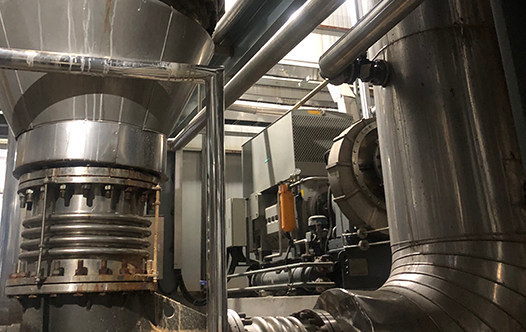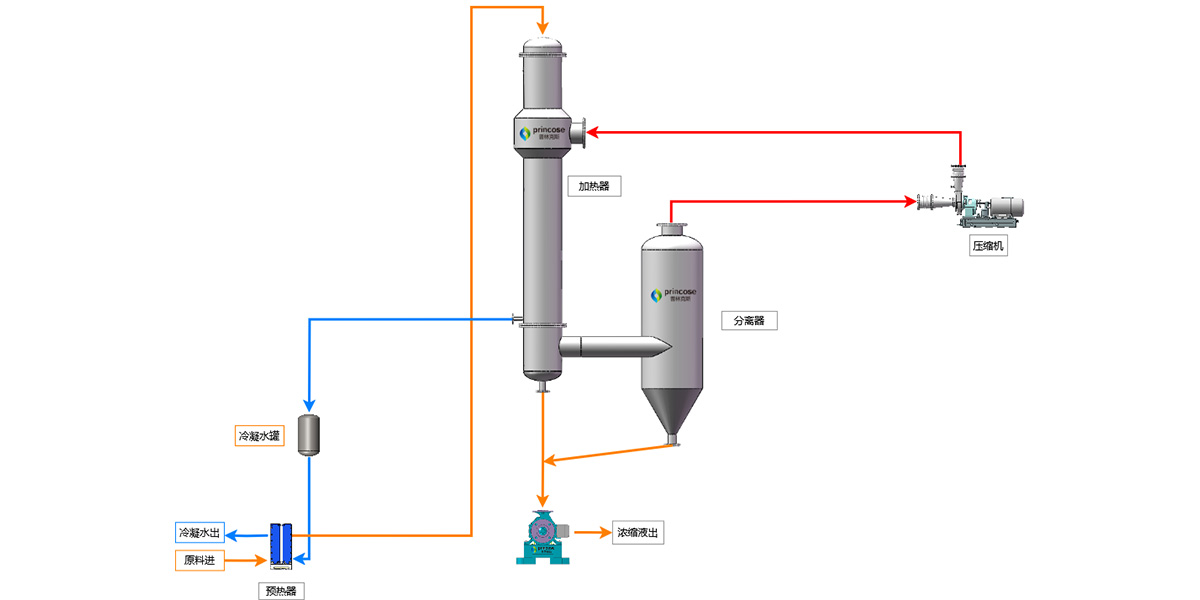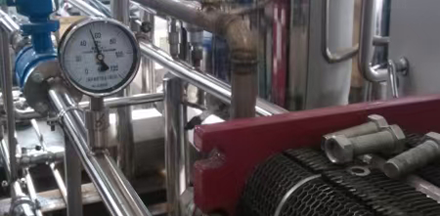The MVR evaporator (mechanical vapor recompression) is a technology that utilizes a compressor to work on secondary steam, increasing its energy through compression to provide a heat source for the system, thereby reducing the demand for external energy sources. The secondary steam, after being compressed by the compressor, experiences an increase in pressure and temperature, resulting in an increased enthalpy. This compressed steam is then sent to the heater of the evaporator to serve as a heat source, maintaining the evaporation state of the feed liquid, while the heating steam itself transfers its heat to the material and condenses into water. In this way, the originally wasted steam is fully utilized, recovering latent heat and improving thermal efficiency. Except for startup, no live steam is required throughout the evaporation process.



No condenser or only a very small condenser is required, resulting in a very simple structure and process. Fully automatic operation allows for continuous and safe operation.

The equipment is equipped with CIP cleaning lines, enabling in-situ cleaning. The entire set of equipment is easy to operate and has no dead corners.

Compact Structure and Small Footprint, with a compact structure and low overall height, the equipment is particularly suitable for retrofitting old factories or in situations with limited space.

Traditional multi-effect evaporators use fresh steam as an energy source, while MVR mechanical vapor compression evaporators consume electrical energy. Evaporating one ton of water typically consumes 17-23 kWh of electricity, and for materials with a relatively small increase in boiling point, the electricity consumption can be below 20 kWh per ton of water. The extent of energy savings is closely related to the local unit price of fresh steam and electricity. Under normal circumstances, MVR evaporators save over 60% of energy compared to five-effect evaporators.
Rich experience in process planning and equipment manufacturing
Customized Process Solutions
The project scope ranges from experimental testing of material parameters, to determination of process plans, to drawing, procurement, manufacturing, installation, debugging, training, and ultimately equipment delivery

Career
Professional
build Brilliant
Future
Proficient in industry/Achieving the future
